If comfort and long distances are your game, one of these luxo-tourers might be for you, it’s just a matter of which one?
Harley-Davidson Ultra Limited vs Honda Goldwing Tour Premium
There’s no finer way to travel the open road on a long-haul than on a plush, gadget-filled mega tourer. Some will say ‘you may as well buy a car’ – but they’re clearly not real motorcyclists. Some will say ‘you can’t have fun on a behemoth like that’, to them I say – learn to ride. Both statements are wildly incorrect. Of course, you can have fun, and for those that think a car is a better option, then you should hand in your motorcycle licence and purchase yourself a nice comfy family saloon. Yes, bikes in this category are large, but don’t underestimate them, and don’t for a minute think you can’t have fun on one.
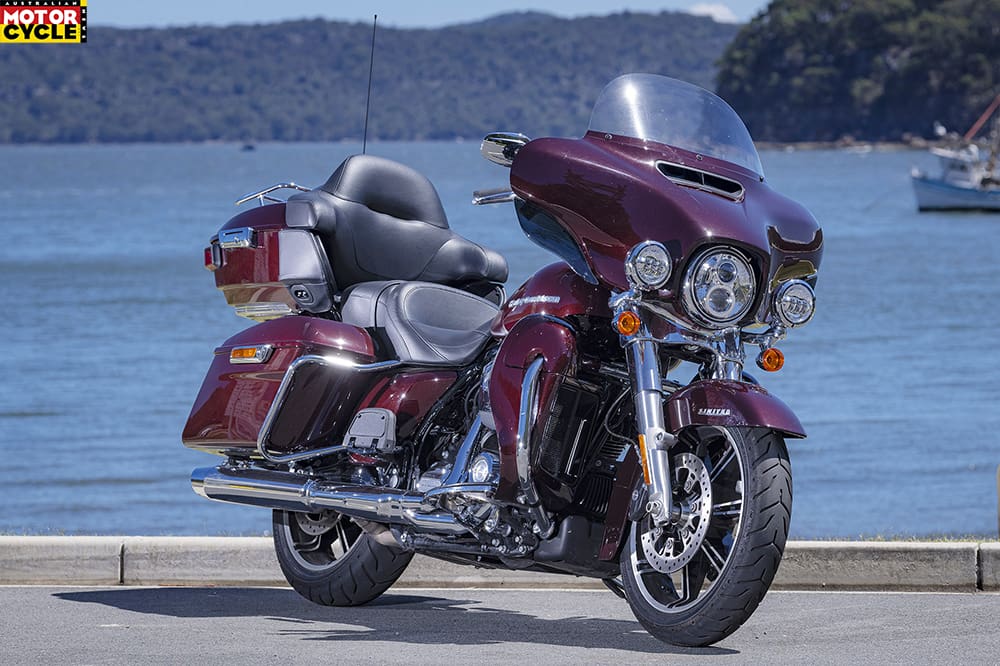
The Honda Goldwing and Harley-Davidson Ultra Limited will get you from A to B via Z in maximum comfort but with two different approaches. The Wing is ultra-modern and bristling with technology, and the Ultra more traditional in both style and tech. But each has their pros and cons and, quite honestly, you won’t go wrong with either.

Before you hit the road, you’re going to want to load for your trip and both have that pretty well covered with enough storage room for a long-haul trip for two. The Ultra offers 133 litres of carrying capacity with its panniers and top box and the top box is also fitted with a carry rack for lashing lighter items to. You can fit two full-face helmets in the top box and there’s also a power supply and organiser pouch inside. Harley only provides a total storage volume, and though the top box looks smaller than the Goldwing’s, the Harley’s panniers are larger.
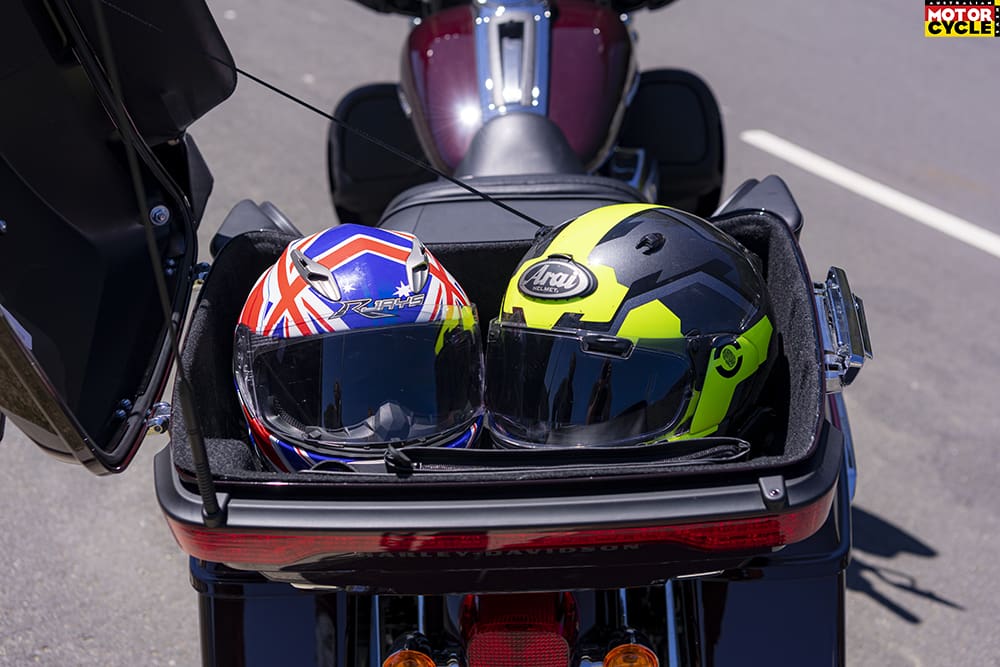
The Wing has a combined storage capacity of 121 litres. The top box has a capacity of 61 litres and will fit two full-face helmets with room to spare, whereas the Ultra is a tighter fit. There’s a power supply and plug for your mobile device that allows you to use Apple CarPlay and Android Auto. The panniers provide 60 litres of storage and open electronically with the touch of a small button on each bag and gas struts that make the opening action that bit more luxurious. If you need more storage on your two-wheeler, you need to talk to Kel about how to pack for a motorcycle trip.

Once you throw a leg over the Ultra’s 740mm seat, you’re met with analogue dials for fuel level, speed, revs and volts, above the TFT interface for the Harley Boom! Box GTS Infotainment system.
All operations are controlled by either buttons on the switchblocks or via the touchscreen display. The only exception is the seven-level heated grips, which are operated via a simple and elegant dial on the end of the left-hand bar.
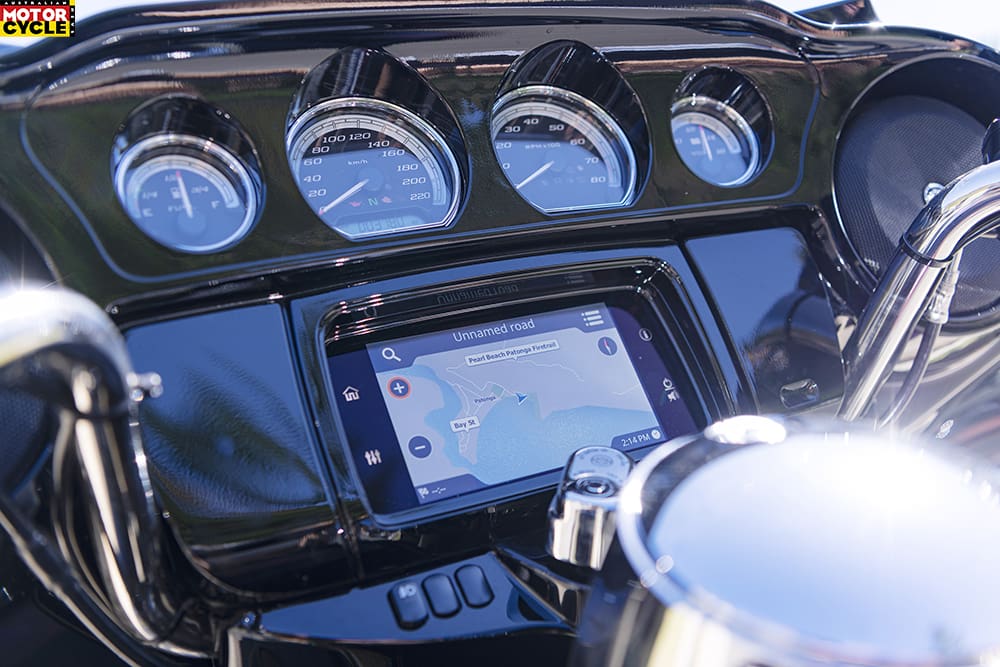
The Wing’s dash features two analogue dials for speed and revs on either side of its large display screen, plus two LCD screens on the extremities of either end of the dash. There’s also an array of buttons on the tank just above the factory airbag, for various functions including the heated grips and seats, and driving lights, and just above that is the ignition toggle. It’s a fair bit to take in and a bit daunting compared to the Ultra. And that’s before you even start to come to terms with the switch blocks that have more buttons, knobs and dials than I have room to explain each one’s operation.
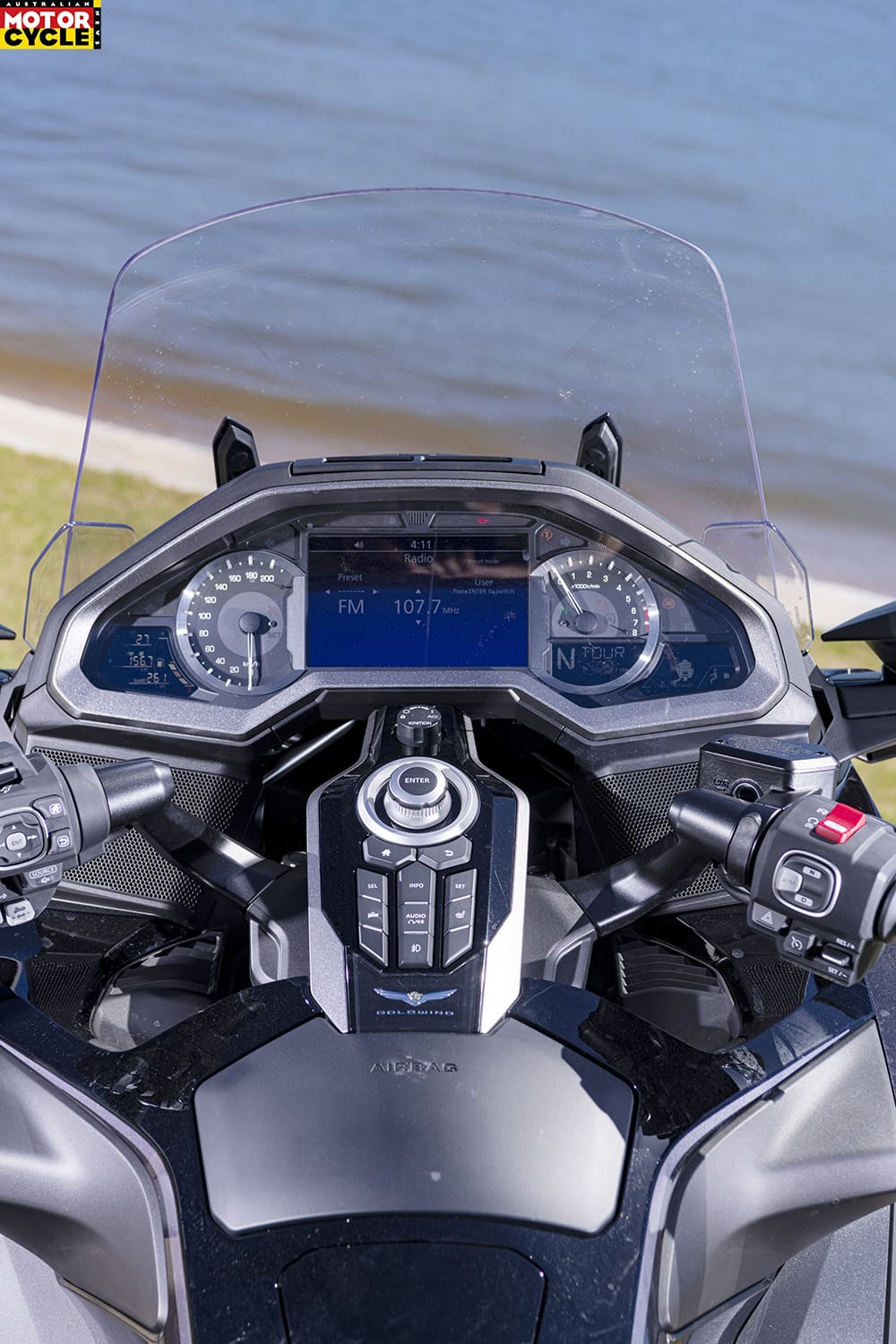
It might seem like a frivolous thing to mention but when you’re dealing with bikes this big, moving them around by hand is a real consideration. The Wing is the easier of the two to push around the shed, helped by the fact that it’s claimed 383kg kerb weight is 33kg lighter than the Ultra’s claimed 416kg. The Ultra Limited has that typical Harley touring bike trait of feeling like it immediately wants to fall over as soon as you hit full lock when pushing it around.

In this regard the Wing ticks boxes over the Ultra that make day-to-day life much less sweaty. For a start it has a starter motor-driven forward and reverse walk feature that lets you use the up and down DCT paddles on the left-hand switch block to move either forward or backwards at walking pace. This makes slow speed work around the garage or when parking so easy – it’s hard to comprehend just how handy this feature is until you’ve tried to reverse a bike of this size up a hill. The Wing is also blessed with Hill Hold Start that prevents the bike from rolling backwards on an incline, which proved to be very handy on my sloped driveway. The Wing, with its automatic DCT transmission, puts itself into neutral when you switch it off and there’s a handbrake to stop it running away on you.
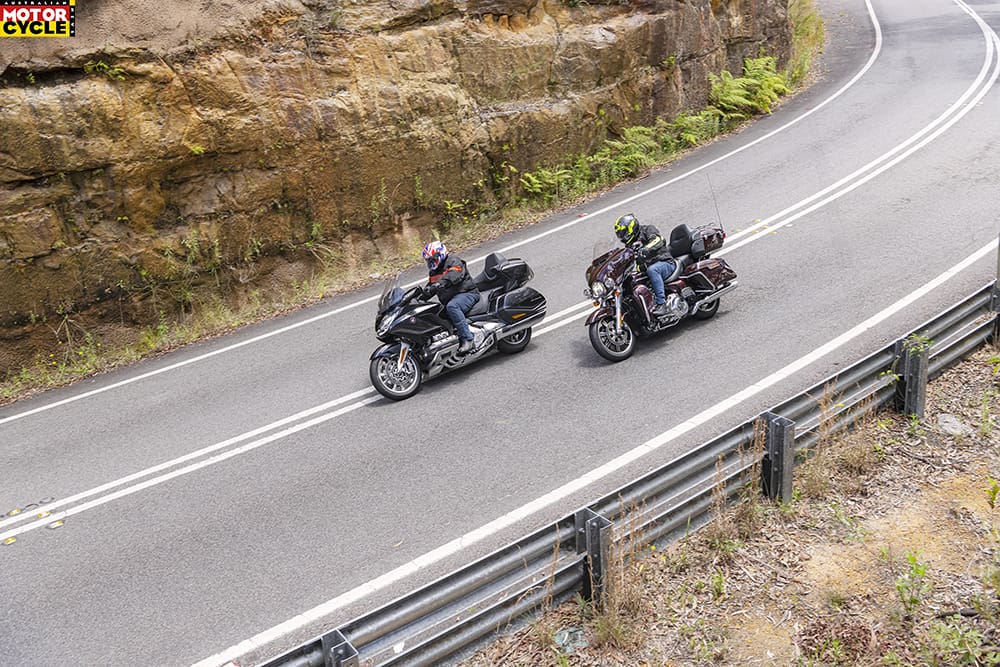
Once you’re rolling, both bikes are extremely stable and surprisingly easy to ride at slow speed. Both carry their weight very low, aiding stability, but the Ultra feels the more nimble of the two, the steering feels lighter and quicker despite the fork-mounted fairing, and if you pick your gaps wisely, lane splitting isn’t an issue. Just be mindful of the Ultra’s batwing fairing that seemingly hovers at the same level as every car mirror on the planet.

The Goldwing is powered by a horizontally opposed six-cylinder engine, as was the fifth generation, but the 1833cc, 24-valve Unicam engine was an all-new, lighter, and more powerful unit that previously. The Goldwing’s six can push out a healthy 93kW of power at 5500rpm and a massive 170Nm of torque at 4500rpm through its seven-speed DCT gearbox. That power is conveyed to the back wheel via shaft-drive.

The Ultra is powered by the trusty Twin-Cooled Milwaukee-Eight 114 V-twin that has powered most of Harley’s touring range for the last couple of years. The 1868cc pushrod donk produces 69kW of power at 5050rpm and 166Nm of torque at just 3000rpm. Power is fed to the back wheel through a typically clunky but bulletproof six-speed gearbox via a chain final drive.
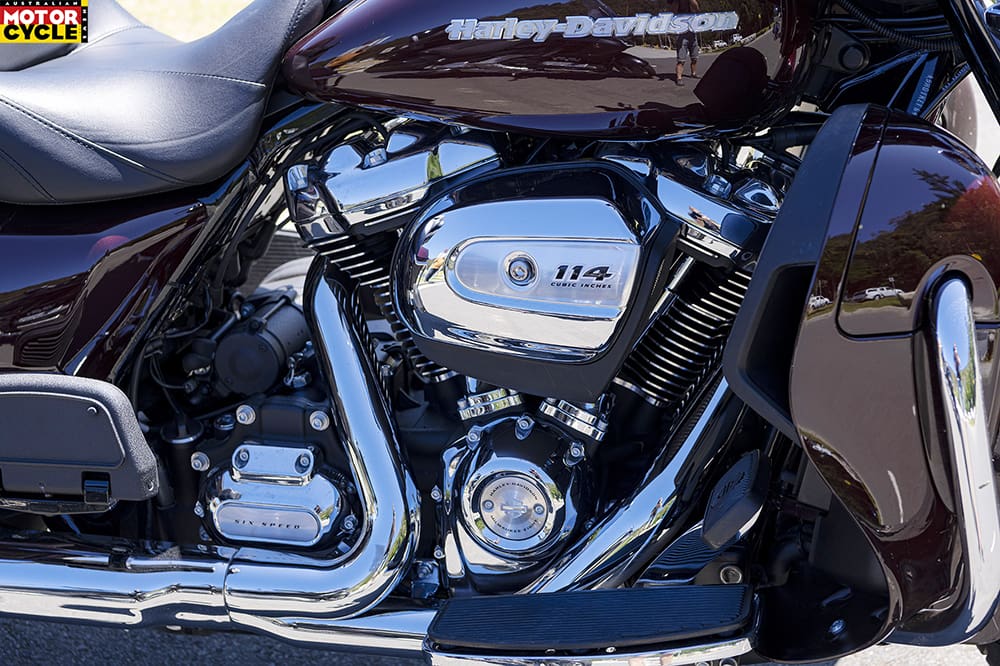
With less power, less torque and extra weight to drag around, the Ultra is always going to get hosed in a drag race with a Wing, but these aren’t drag bikes and on the road both have more than enough grunt to get the job done, and then some. The Ultra’s low-down grunt makes tooling around as you work your way out of town easy and it lopes along nicely on the long open-road sections. The Wing’s donk is a racehorse in comparison; it revs harder and makes its best power and torque higher in the rev range. But with the aid of the DCT gearbox, it always just seems to be in the sweet spot at the right time, so the Ultra’s low-down torque advantage isn’t quite as apparent.
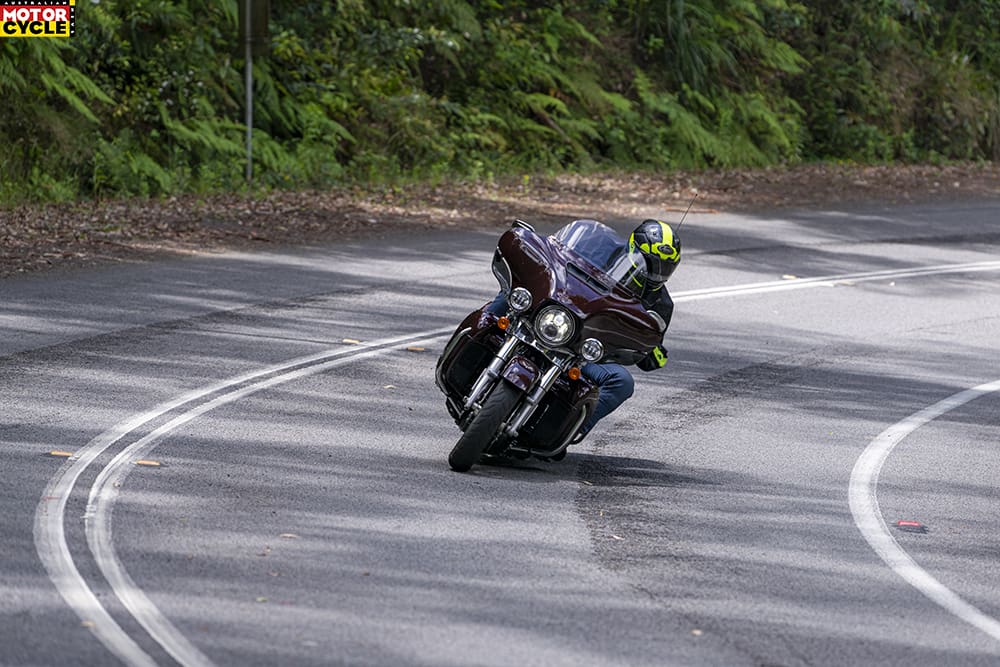
Around town, or on the way out of town, the Ultra is my pick. It steers quicker, has the grunt factor going for it – and it has a clutch lever, and that gives you an element of finesse that the Goldwing’s DCT lacks. Depending on the ride mode you’re in, the Wing tends to hold second gear to very low speeds and if you’re not paying attention to that, it can be a wild ride. I encountered this on several occasions while doing U-turns and lane filtering. When in auto mode, the DCT would hold second gear down to walking pace before dropping into first and spearing you forward and into all sorts of ugly balance issues. This is especially dangerous to the cleanliness of your underpants while executing a tight, feet-up U-turn
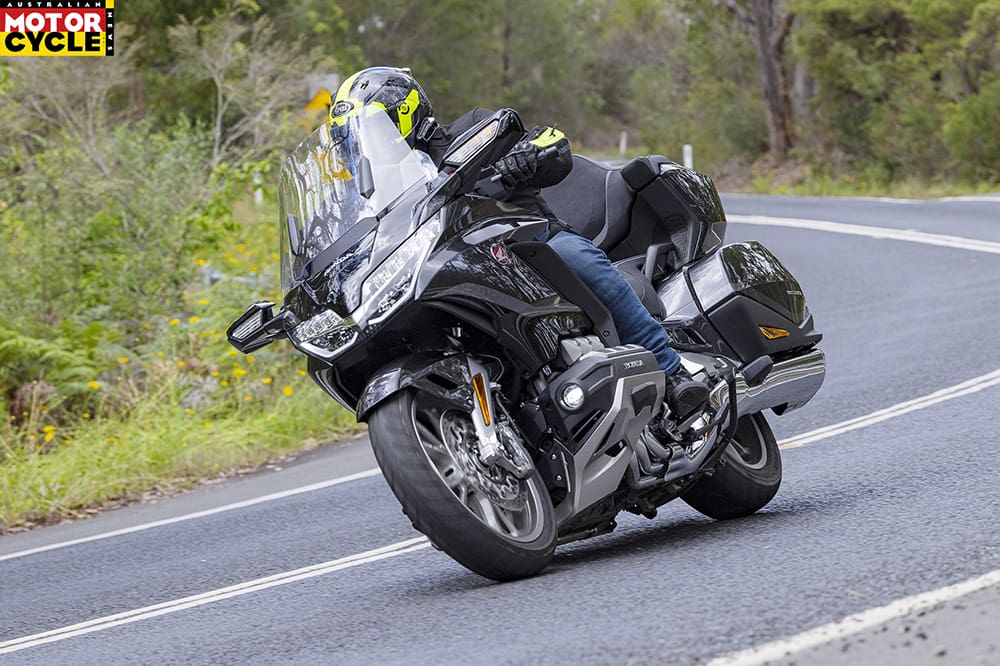
Once you’ve got the two out of the ’burbs and onto the straight and boring highway, there’s little difference between them. I found the Wing’s upright riding position a little more comfortable than the Ultra’s laid-back, feet forward position that sits you on your tailbone, but I’m knitpicking – they are both a pleasure to be on when you’re cruising along.
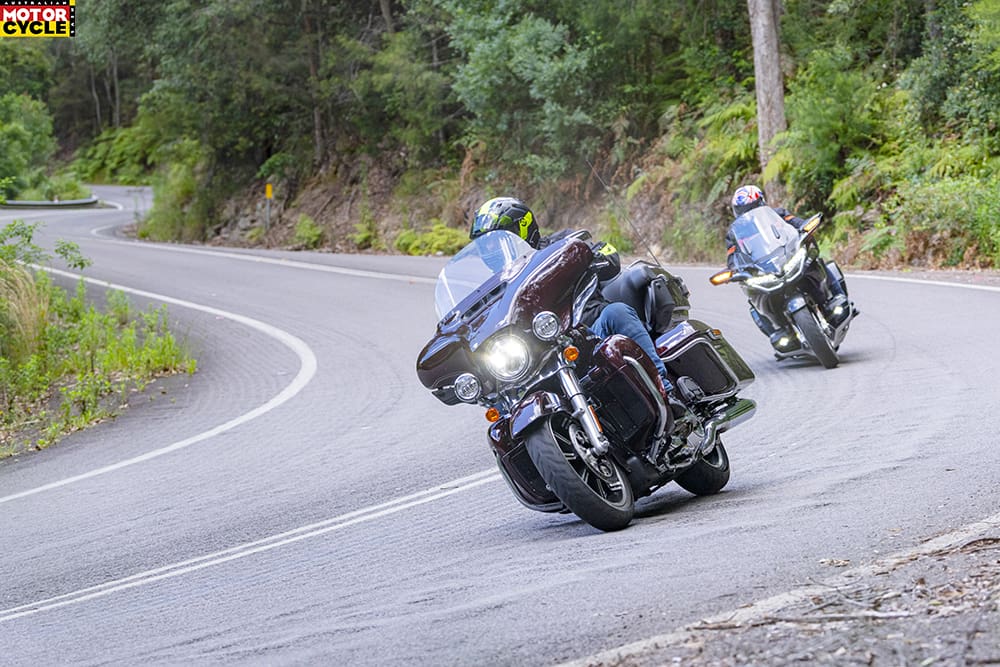
The Wing sports an electronically adjustable screen, while the Ultra has a non-adjustable screen with a bunch of accessory screens available at different heights. The Wing’s screen sits in my eyeline and blows a blast of wind at my helmet that creates a racket loud enough to drown out the four-speaker stereo system. The Ultra’s screen was perfect for my height and in a normal riding position – I have to slouch on the Wing, it’s a quieter experience on the Ultra.

On the subject of sound, both bikes feature a four-speaker stereo setup. Look, it’s a wank, and if you value sound quality get a bloody headset, because at highway speeds, they sound terrible.
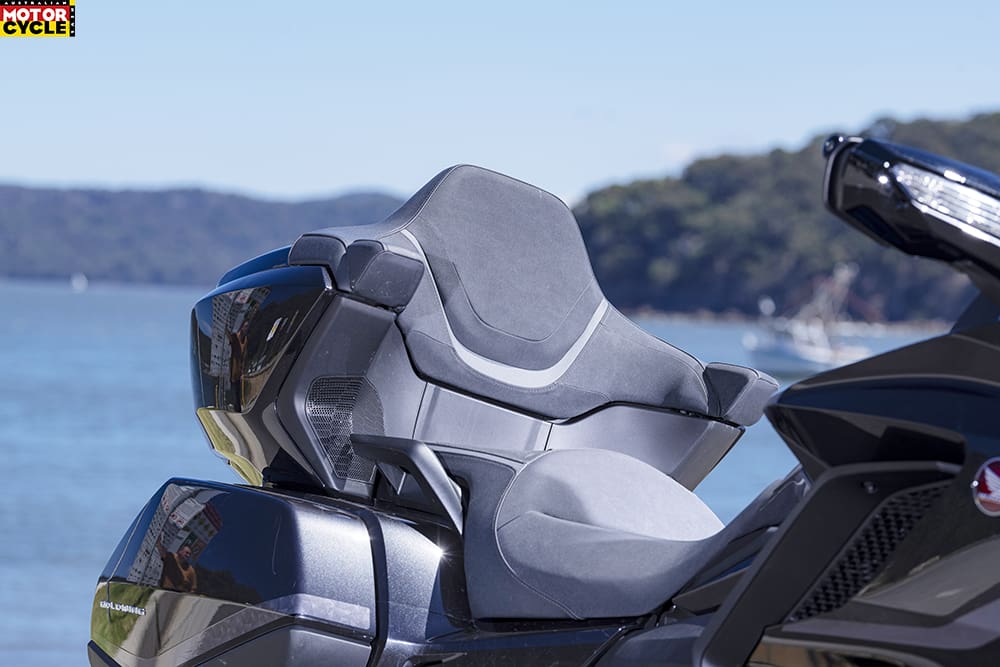
It’s all pretty even on the handling and comfort stakes until you leave the relatively smooth freeways and hit roads like New South Wales’ disgracefully maintained highways and back roads. The Wing’s aluminium beam chassis, quality electronic suspension, six-pot engine and agile handling has it sprinting away when it’s time to play. I’ve spent some time on the gen-four and gen-five Goldwings and they always surprised me when it came to their handling abilities. But the sixth-generation Wing is brilliant.

In Econ or Tour mode (there’s four: Tour, Sport, Econ and Rain), the suspension is plush and rolls over everything like a magic carpet and if you get restless, throwing the Wing into Sport mode stiffens up the suspension, livens up the engine and turns the Wing into something more akin to a sports-tourer than a luxo-tourer. It just does everything right and is a pleasure to ride at a decent clip through medium to fast corners, in fact it’s fun. The wishbone front suspension works beautifully and returns plenty of feedback from the front tyre and Honda’s work on getting the weight of the engine and rider further forward has paid massive dividends.

The Wing’s stability in turns is second to none. Multi-bike photoshoots sometimes call for two bikes to be in the same frame and that requires two bikes to be going through a corner closer than can sometimes feel comfortable. I’ve never ridden a bike easier to do this on than the Wing. You simply put the Wing where you want it in the corner and it just stays there, rock solid, predictable, and unfazed by road surface or urgent adjustments in trajectory. To say I was blown away by how good the Wing is would not be overstating it.

The Ultra Limited doesn’t handle badly; at casual riding speeds it’s enjoyable and plush, but that plushness causes issues if you fancy a spirited ride. The Showa 49mm Dual-bending non-adjustable forks work well, and I have no complaints with the front end at all, but the rear shocks should be popped in the trash and a better set fitted as soon as you get your new Ultra home. The Ultra Limited bottoms out easily at the rear – with or without pillion and luggage and even cranking up the handy remote preload adjuster knob doesn’t solve the problem. This also causes the floorboards to dig themselves into the tarmac way before you first expect them to and on bumpy corners it can get unnerving as the footboards dig in severely and can throw you off line as well as showering those behind in sparks.

Without some fettling of the suspension, you won’t be keeping up with a competent rider on a Wing through a mountain pass, you’ll be working harder, grinding more and you may end up an inch or so shorter in the spine.
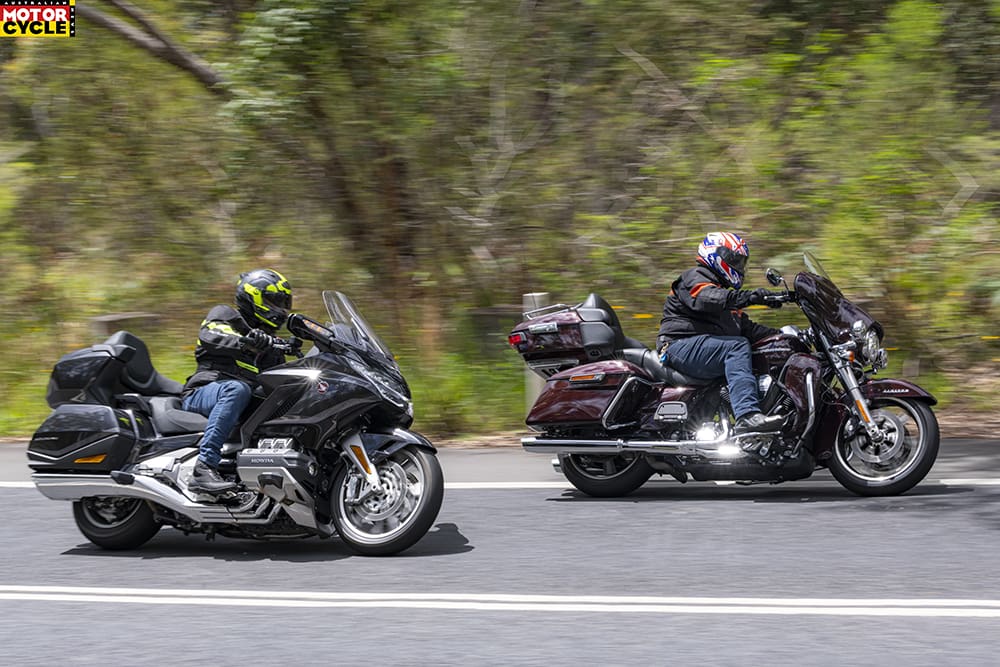
Both bikes feature ABS-equipped linked braking systems and, again, the Wing wins out in this department. Dual 320mm front discs are gripped by six-piston radial-mounted calipers, with the rear sporting a 316mm disc and three-piston caliper. There’s tons of power from the front stoppers, and considering the weight they’re responsible for stopping it’s a beast of a setup. Initial bite is top notch and there’s little dive under brakes – just enough to let you know what’s happening thanks to the double wishbone front end.
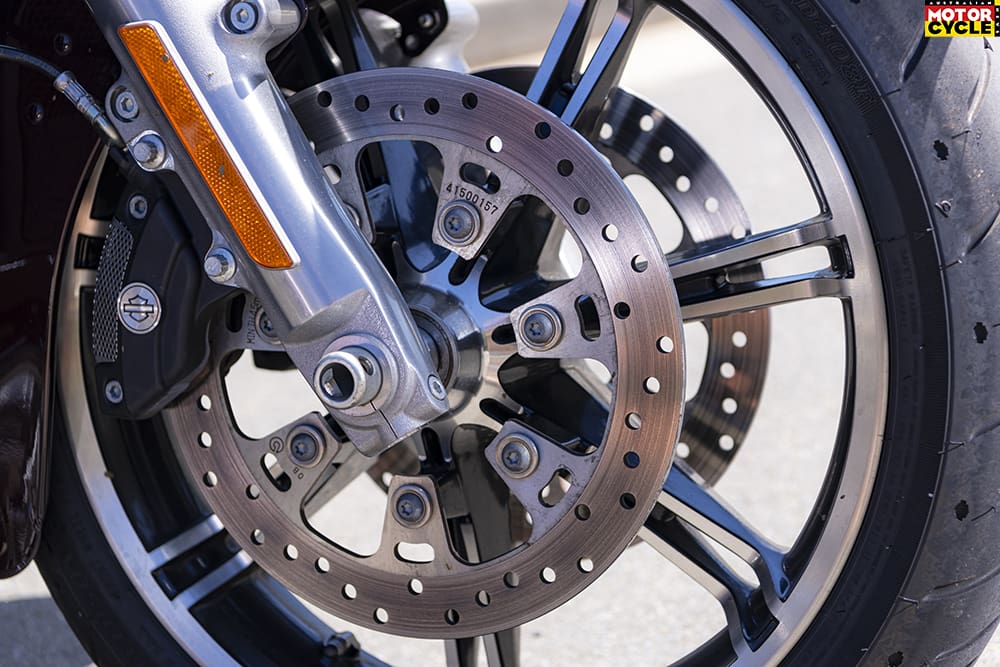
The rear is less impressive, feel is vague, and power could be better without having to stomp on the pedal. This is more of a problem when performing U-turns or negotiating roundabouts, but on the open road it works okay.
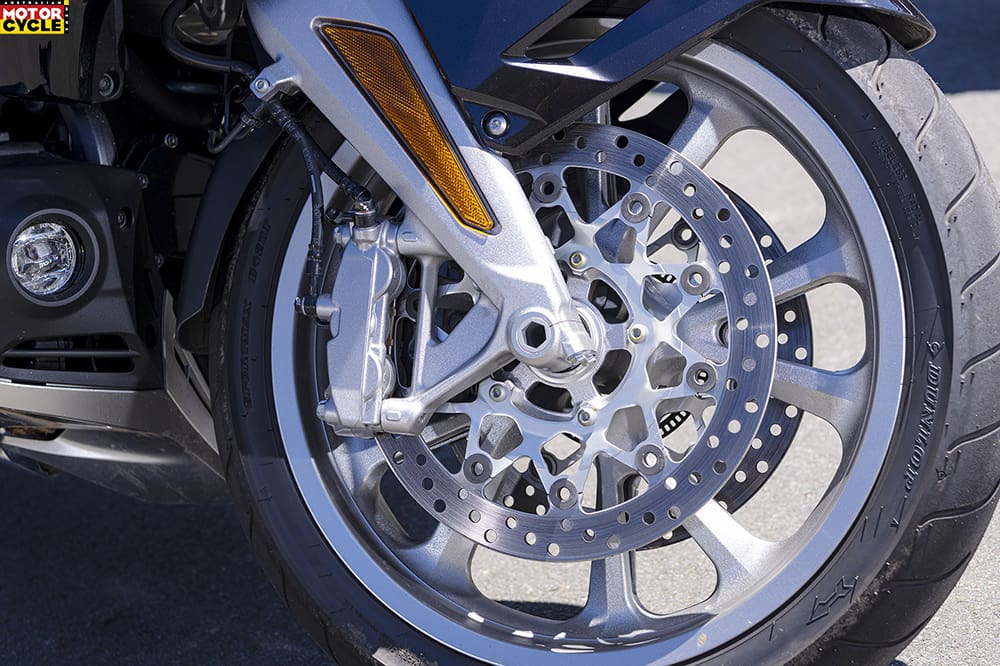
The Ultra Limited Harley-branded Brembo dual four-piston front calipers are mated to 300mm floating rotors, while the rear is also equipped with a four-piston caliper and 300mm disc. The front brake doesn’t lack power, but the lever feel is wooden which may be rectified by a different choice of pads. If you could have a tourer with the front brakes from a Wing and the rear from the Ultra, you’d be sweet. The Ultra limited rear is fantastic – plenty of power, you know exactly what the rear wheel is doing and only needs light foot work to get the job done.
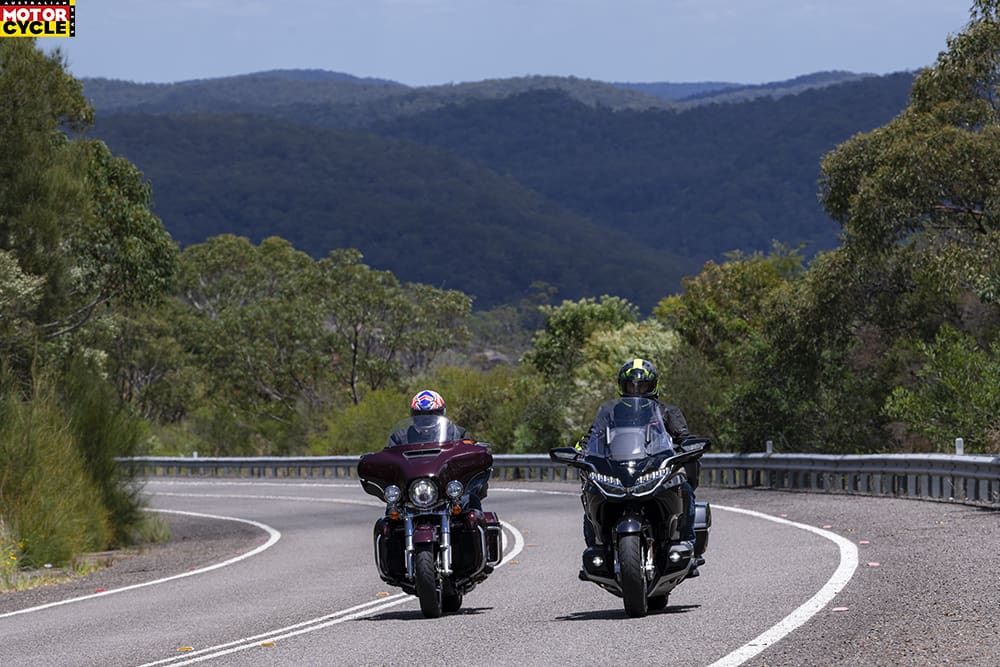
Having a mega-tourer in my shed some day is on my bucket list. And while both of these offer awesome long-haul comfort and are surprisingly agile once you’re rolling, the Wing is the clear winner in my book. It’s so good to ride and so capable that it really does blur the line between luxury-tourer and sports-tourer.
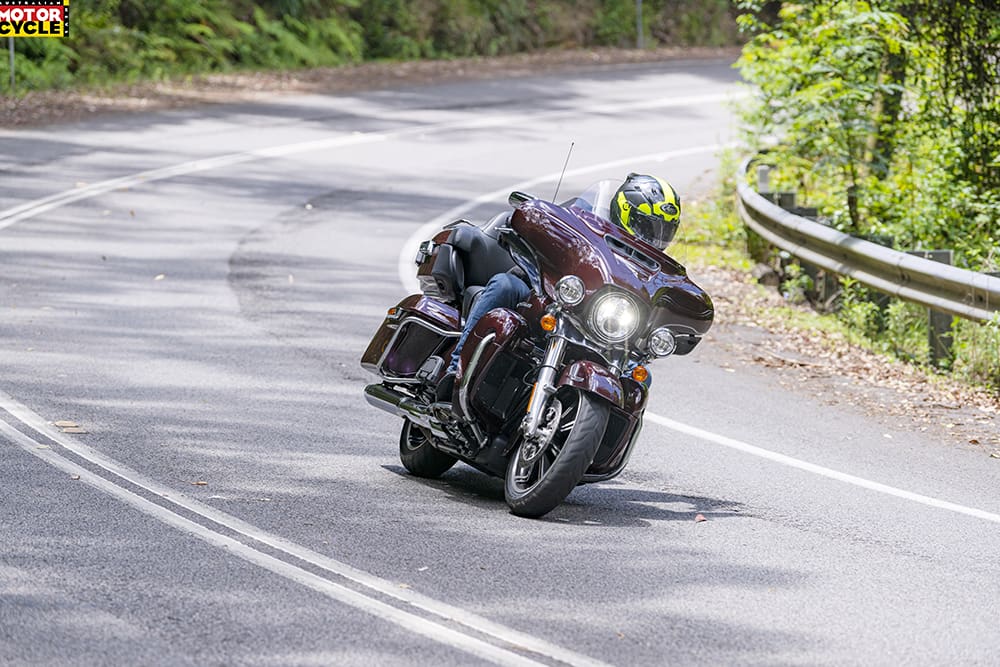
But for many, the Ultra Limited would be hard to pass up given the choice for a few reasons. Firstly, I love the old-school looks, it would sound great with a set of pipes on it, and with an on-road price of $43,995 it’s a good deal cheaper than the Goldwing’s $46,999 plus on-road-costs asking price.
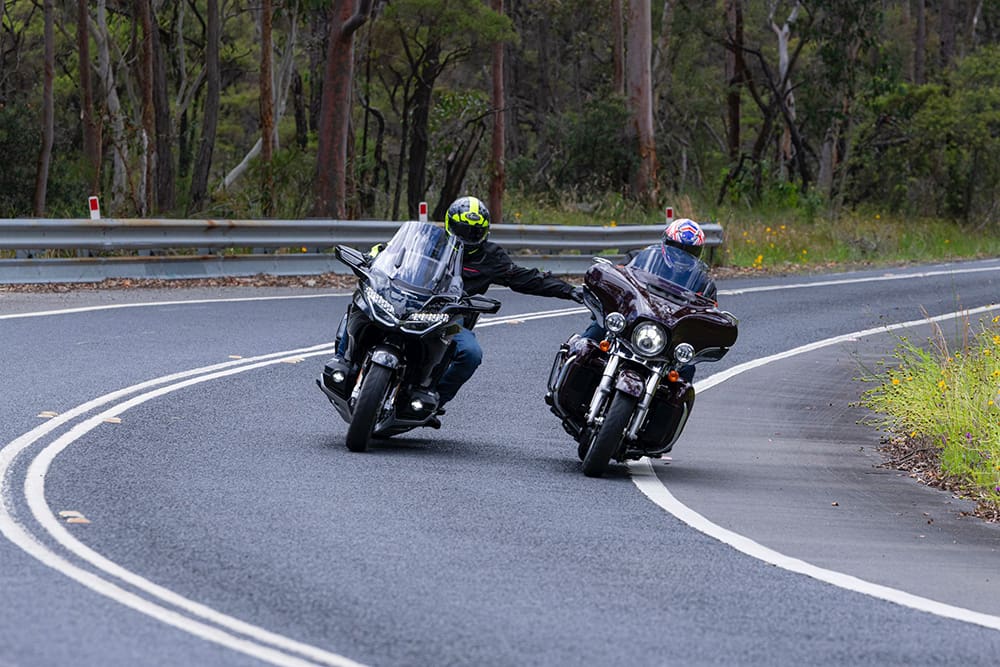
The Ultra Limited is let down by average rear suspension, but if you didn’t buy the Wing, you’ll have a big chunk of change left over, and that’s an easy fix. As tempting as the Ultra is though, sports riding still runs thick in my veins and the Wing is king. But if it doesn’t in yours and you like to cruise to see the sights, pick either, they’re both awesome.

TEST: PETE VORST PHOTOGRAPHY INCITE IMAGES